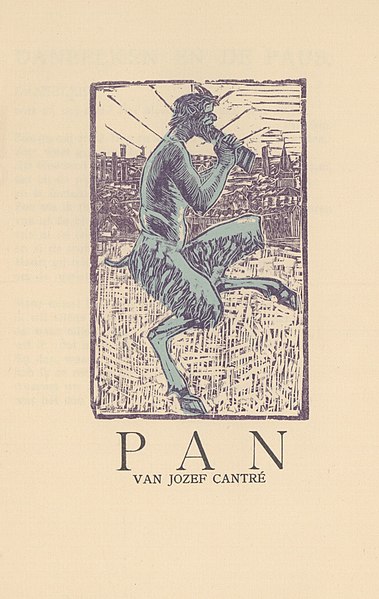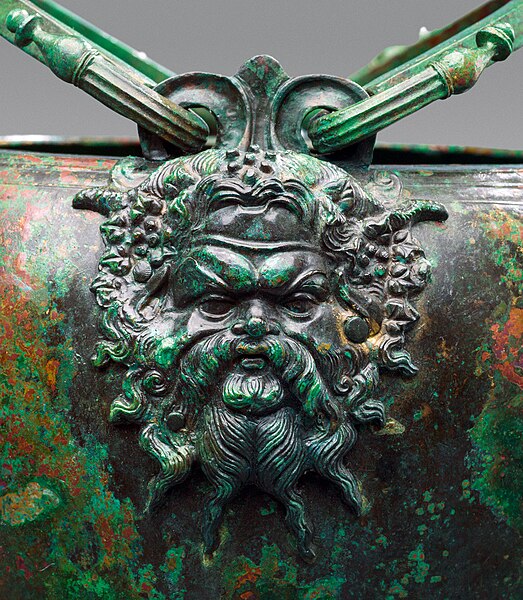In ancient Greek religion and mythology, Pan is the god of the wild, shepherds and flocks, rustic music and impromptus, and companion of the nymphs. He has the hindquarters, legs, and horns of a goat, in the same manner as a faun or satyr. With his homeland in rustic Arcadia, he is also recognized as the god of fields, groves, wooded glens, and often affiliated with sex; because of this, Pan is connected to fertility and the season of spring.
Pan teaching his eromenos, the shepherd Daphnis, to play his pan flute, Roman copy of Greek original c. 100 BC, found in Pompeii.
Pan illustrated in the Flemish magazine Regenboog. Draft for the woodcut Pan of Jozef Cantré. Published in 1918.
Mask of the god Pan, detail from a bronze stamnoid situla, 340–320 BC, part of the Vassil Bojkov Collection, Sofia, Bulgaria
Representations of Pan on 4th-century BC gold and silver Pantikapaion coins.
Religious practices in ancient Greece encompassed a collection of beliefs, rituals, and mythology, in the form of both popular public religion and cult practices. The application of the modern concept of "religion" to ancient cultures has been questioned as anachronistic. The ancient Greeks did not have a word for 'religion' in the modern sense. Likewise, no Greek writer known to us classifies either the gods or the cult practices into separate 'religions'. Instead, for example, Herodotus speaks of the Hellenes as having "common shrines of the gods and sacrifices, and the same kinds of customs."
Aegeus at right consults the Pythia or oracle of Delphi. Vase, 440–430 BCE. He was told "Do not loosen the bulging mouth of the wineskin until you have reached the height of Athens, lest you die of grief", which at first he did not understand.
Aphrodite riding a swan: Attic white-ground red-figured kylix, c. 460, found at Kameiros (Rhodes)
Asclepios, god of medicine. Marble Roman copy (2nd century CE) of a Greek original of the early 4th century BCE. Asclepios was not one of the Twelve Olympians, but popular with doctors like Pausanias, and their patients.
The Judgment of Paris by Peter Paul Rubens (c. 1636), depicting the goddesses Hera, Aphrodite and Athena, in a competition that causes the Trojan War. This Baroque painting shows the continuing fascination with Greek mythology








